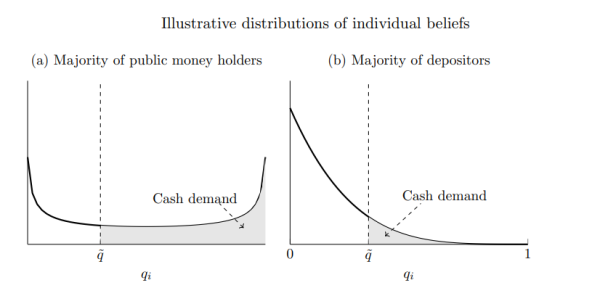The bulk of euro-denominated cash is held for store of value purposes, with such holdings sharply increasing in times of high economic uncertainty. Researchers from the European Central Bank (ECB) develop a Diamond and Dybvig model with public money as a store of value and heterogeneous beliefs about bank stability that accounts for this evidence.
Consumers who are sufficiently pessimistic prefer to hold cash. In the model, the introduction of a central bank digital currency (CBDC) as a store of value that is superior to cash leads to bank disintermediation as some depositors opt for switching to CBDC based on their beliefs.
While CBDC partially replaces deposits, long-term lending decreases less than proportionally (i.e., increased relative maturity transformation) as remaining depositors are, on average, more optimistic about bank stability and banks re-balance their portfolio accordingly. The appropriate calibration of CBDC design features such as remuneration and quantity limits can mitigate these effects. Researchers study the individual and social welfare implications of introducing CBDC as a store of value.


